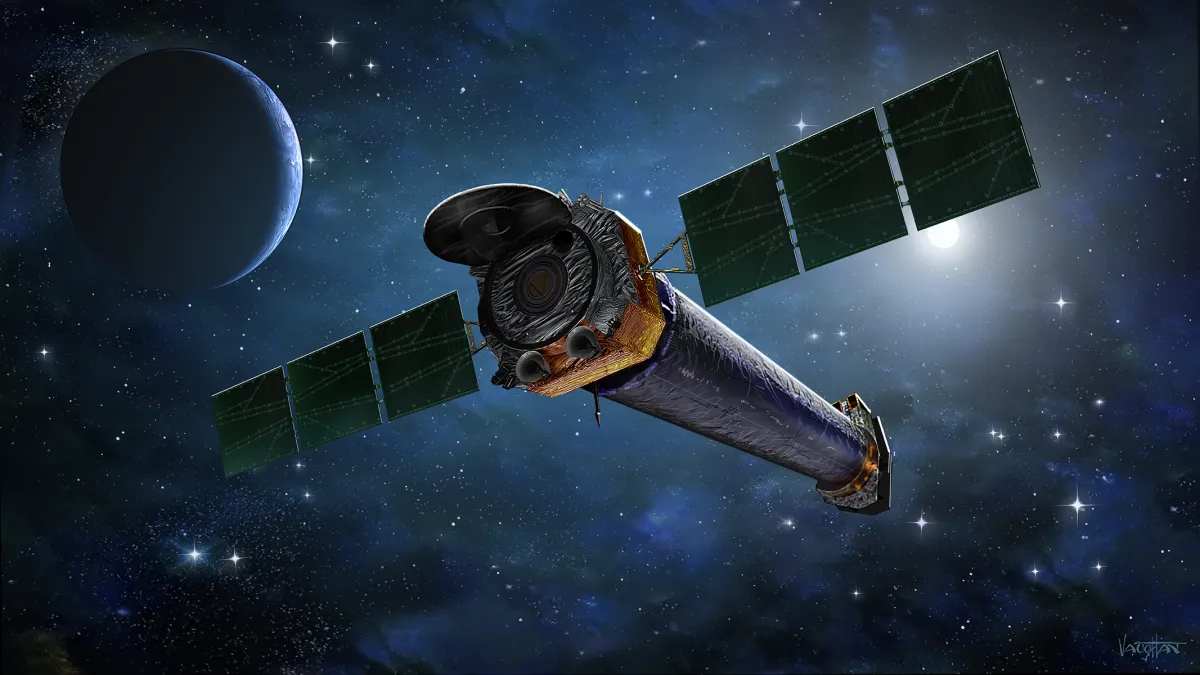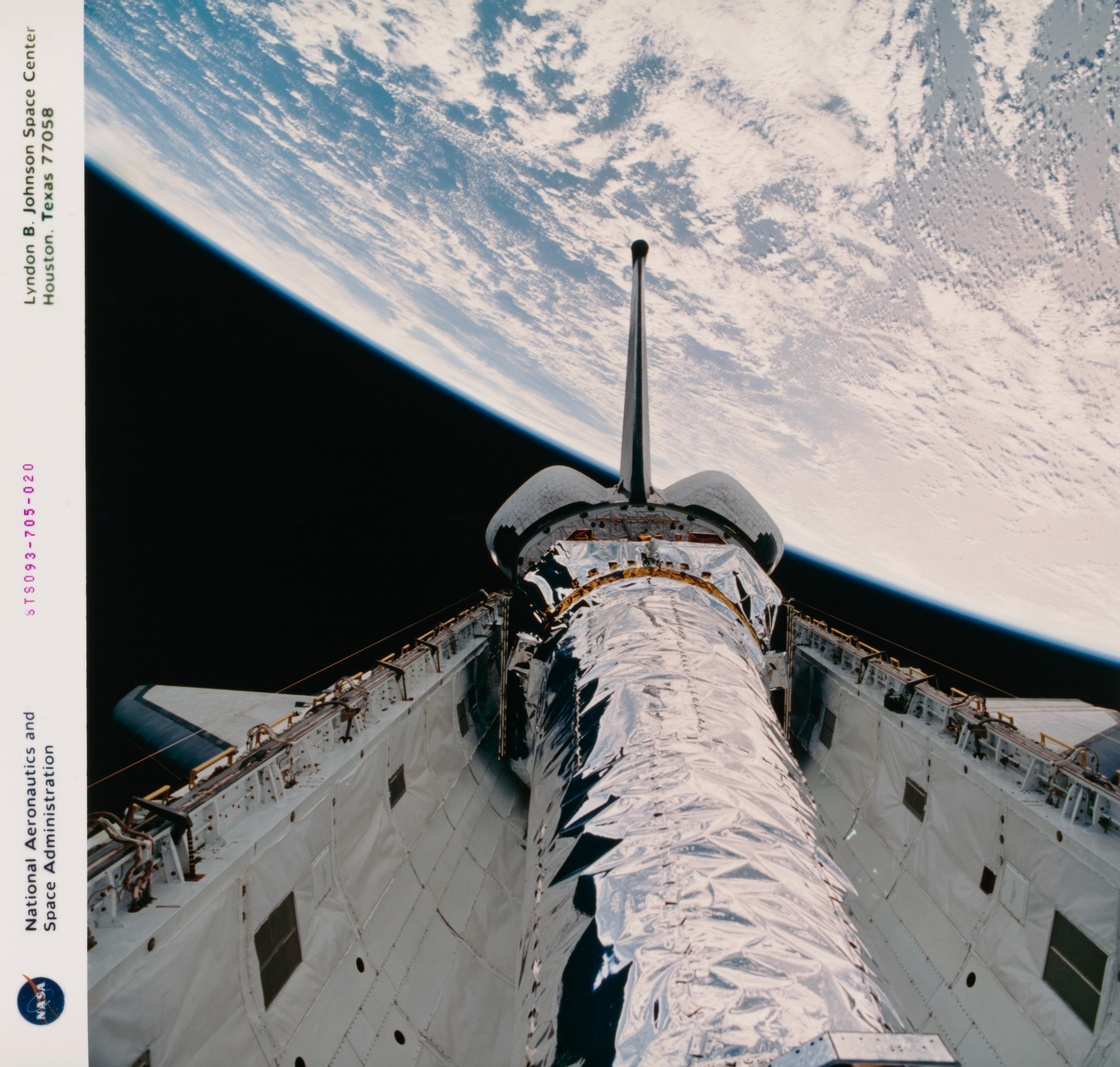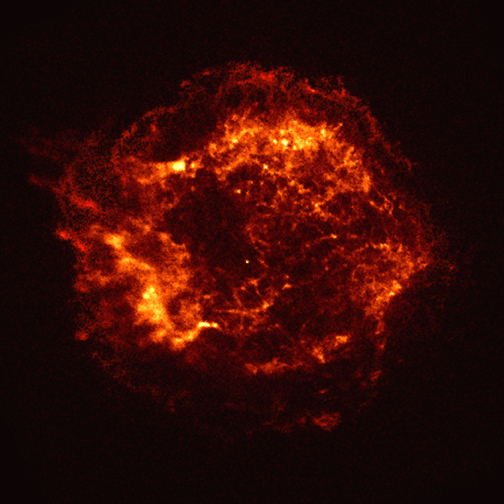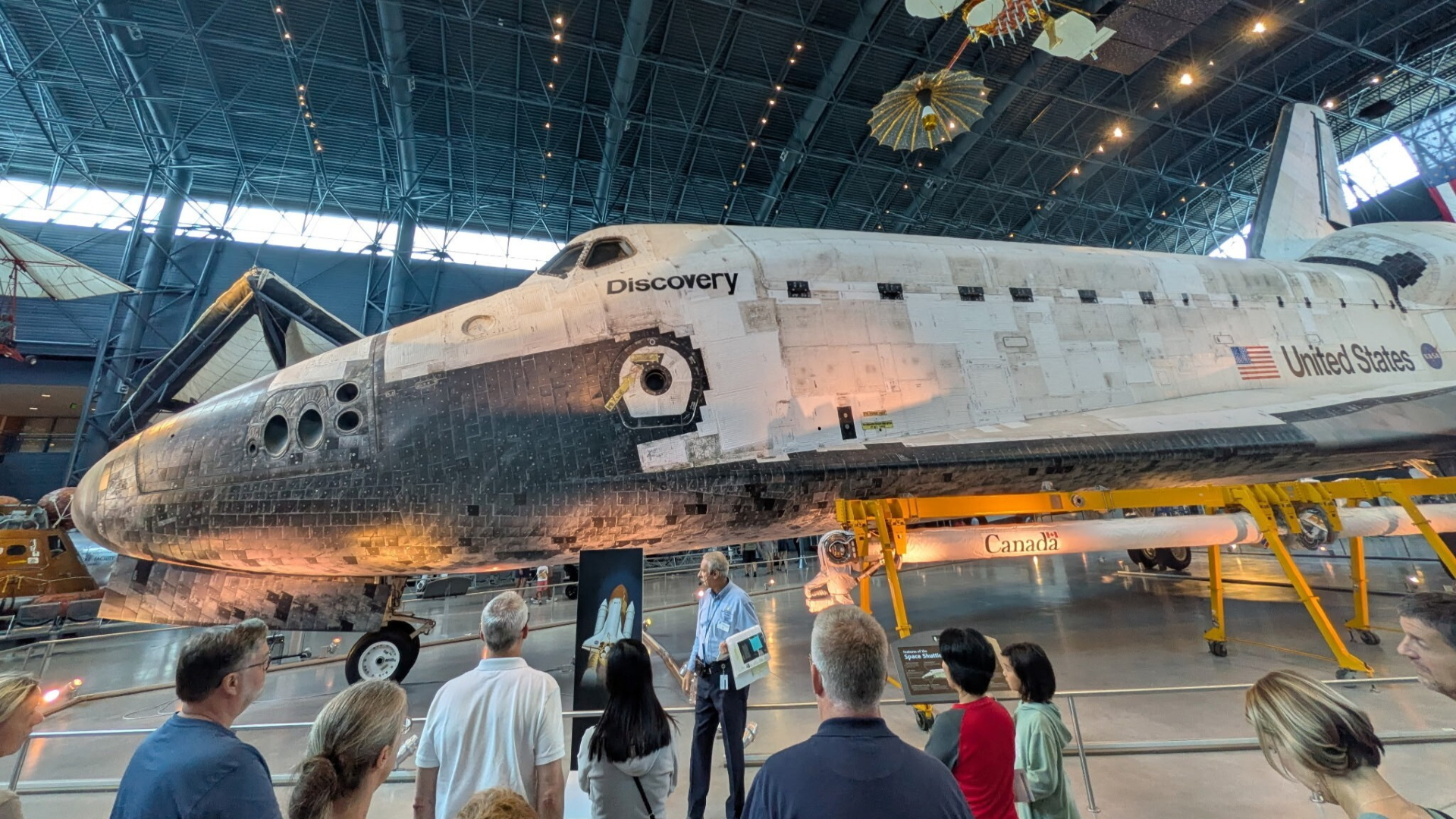The Chandra X-ray spacecraft may soon go dark, threatening a great deal of astronomy
Astronomers might face layoffs, a key observatory might be forced to shut down and precious cosmic details might start to fade from view.
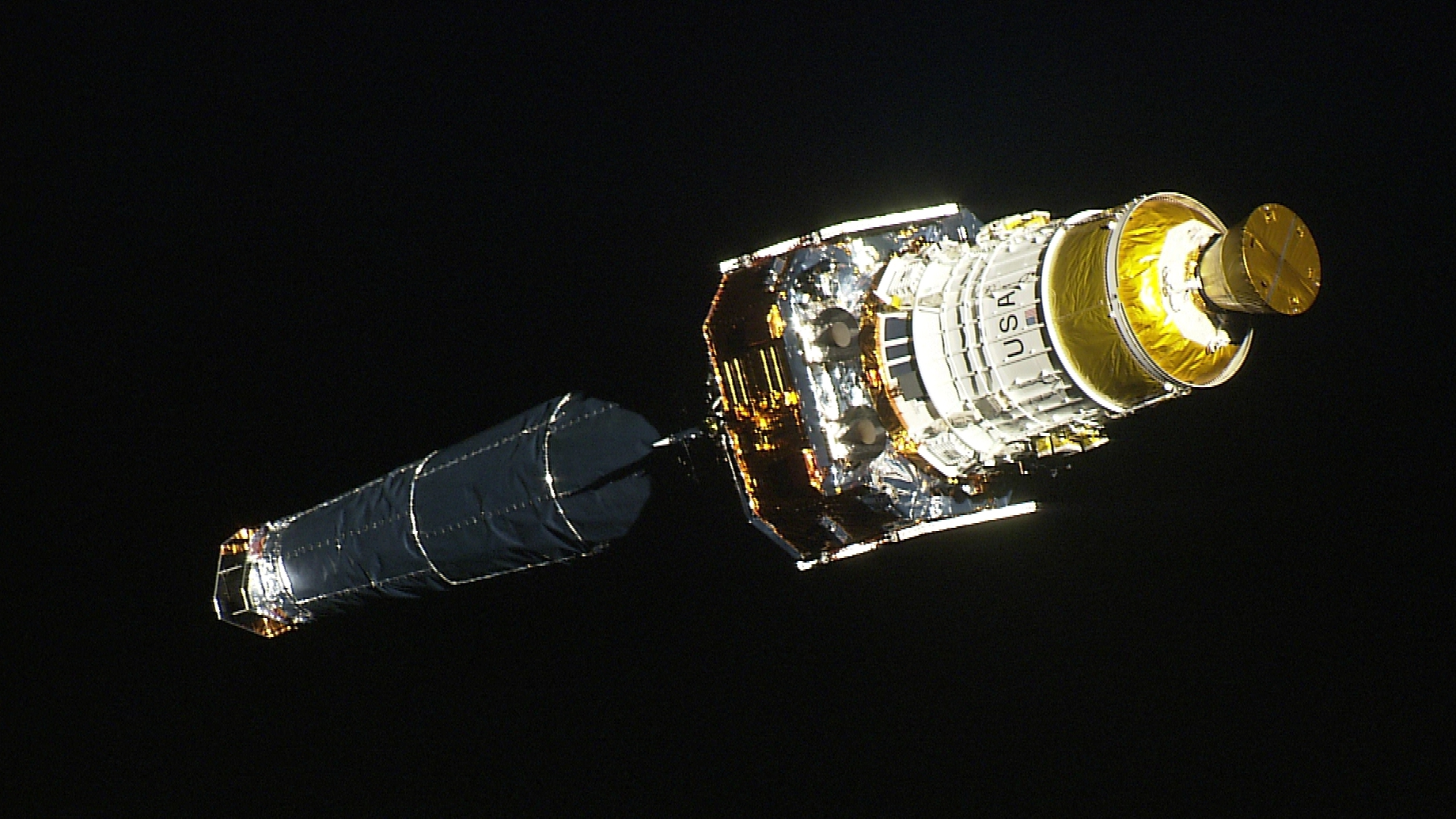
Last week, an ominous letter was published to the Chandra X-ray Observatory's website. "Dear Chandra community," it starts, "As many of you are aware, the NASA budget for FY25 and beyond was released…"
This letter was written by Patrick Slane, director of the Chandra X-ray Center. In it, he's talking about NASA's budget proposal for the next few years. It's a budget that paints Chandra's future as a bleak one — a budget that would leave Chandra's mission behind.
"For scientists who rely on Chandra for their research, the mood is one of shock," Slane told Space.com, "but the energy to push back on this decision is high."
Related: Private servicing mission could extend life of NASA's Chandra space telescope
Without question, the unexpected end of Chandra would be heartbreaking for astronomers, and for astronomy. Scientists who use the Earth-orbiting spacecraft as their north star to elucidate the structures of black holes will face layoffs, and there is currently no other observatory capable of achieving the kind of X-ray resolutions Chandra has been obtaining since it reached its cozy spot around our planet in 1999. It is these resolutions, in fact, that have allowed those black hole scientists to study not just the voids themselves, but also many cosmic wanderers with the misfortune of treading too close.
Its nested mirrors smoothed down to the precision of a few atoms make Chandra sensitive enough to follow spaceborne signals back to their very faint sources, a sensitivity even the all-powerful James Webb Space Telescope doesn't have. That's because the JWST actually doesn't work with X-rays at all. Neither does the Hubble Space Telescope, nor the Euclid Space Telescope. In fact, there are actually not many observatories that look at X-rays in general.
"The Athena X-ray observatory being developed by ESA — though currently undergoing budgeting pressures of its own — would provide many similar capabilities, with much larger collecting area," Slane said, "but with angular resolution that will fall short of Chandra's exquisite imaging capabilities."
Breaking space news, the latest updates on rocket launches, skywatching events and more!
The space observatory can identify neutron stars in faraway galaxies that likely remain hidden to our other devices, and it can decode intricacies of stellar explosions so well it's easy to forget how incomprehensible a stellar explosion is to the human mind. Without Chandra, it'd be tough to achieve all of these things, maybe impossible, until someone makes a Chandra 2.0.
Yet, there isn't a plan to make a Chandra 2.0.
"The logical NASA follow-up to Chandra," Slane said, "is a mission called Lynx." Unfortunately, however, Lynx was identified for support in the most recent Decadal survey — basically an overview of the most important science projects over a period of ten years — but was not selected for high-priority development funding.
Still, even among everything listed, the most frustrating aspect of shutting down Chandra, and one that Slane's letter makes very clear, is also arguably the simplest: It still works.
"I start most of my mornings listening to a brief 9 a.m. tag-up meeting at which Chandra status is reported by the team," Slane said. "I'm used to hearing the calm voice of Paul Viens, our lead engineer, with his usual description: 'There is nothing to report from engineering; things are quiet with the spacecraft. This kicks off the beginning of another productive day with Chandra. It is sad to imagine those same words in a different context."
NASA's point of view
To get into some specifics, NASA's 2025 budget request — which agency officials actually admitted was way lower than they hoped for, and more of a "congressional compromise" — doesn't exactly say Chandra must power down straight away.
Rather, in the budget's outline of how various NASA-related projects will be funded over the next few years, Chandra's budget is slated to shrink tremendously.
The observatory's budget goes from a proposed $41.1 million in 2025, to $26.6 million in 2026. That second figure sticks for 2027 and 2028, but then, in 2029, the budget allocates only $5.2 million for Chandra.
"We knew that budget problems were looming," Slane said. "Our budget process for 2024 was tumultuous, with up-and-down estimates that ultimately left a shortfall that, as directed by NASA HQ, was managed through reductions to the funding that supports observers."
However, actual budget numbers weren't revealed to the team until the official budget request came out.
"In January," Slane said, "we went through an earlier budget exercise for which we were directed to assess impacts of a budget for FY25 that remained at FY24 levels. The impacts were very significant."
The budget announced, he added, was "much, much lower than what was assumed for that exercise, which was unexpected."
It's worth noting as well that budgets for some other projects are facing reductions too; Chandra's potential downfall doesn't stand alone.
Issues have risen for the U.S. Extremely Large Telescope program, for instance, which came to light in connection with NASA's FY24 budget announcement, which was actually released pretty recently as well. It looks like only one of two huge ground-based telescopes — the Giant Magellan Telescope and Thirty Meter Telescope — will probably get to go forward despite both being in the works already. The budget for Hubble also has a proposed reduction, though it doesn't threaten decommission like Chandra's does.
Next month, both projects will undergo a review at which presentations will be made to NASA and a team of panelists. These presentations will offer options for scenarios under which some form of the projects might continue under the new budget guidelines, Slane says.
"There is — at least formally — the possibility that the panel will issue a finding that the reductions for Chandra should be reconsidered," he said. "As for the next few years, this depends wholly on the result of this review, or on actions from within the science community that might prompt NASA to reconsider its priorities. It is too early to say more at this point."
As for actions within the community, there have already been quite a few.
Even before Slane's letter hit the Chandra website, lots of scientists had taken to X (formerly Twitter) to discuss the energy among those who owe their work to the beloved observatory's capabilities.
Jonathan McDowell, an astrophysicist with the Harvard-Smithsonian Center for Astrophysics, made a post on the platform saying "Pretty depressing day at work today with lots of staff updating their resumes as we grapple with NASA's decision to shut down Chandra, the world's only ever high resolution X-ray space telescope, still returning fabulous science discoveries. Still hoping this can be reversed."
"This would be a devastating blow to astrophysics in the US," Dan Wilkins, an astrophysicist with the Kavli Institute for Particle Astrophysics and Cosmology at Stanford University, posted on X. "24 years from launch, Chandra is still doing hugely impactful science, adding enormous value to JWST programs and vital in the era of time domain astronomy."
During the Isaac Asimov debate held just last week at the American Museum of Natural History in New York, Priya Natarajan, the director of the Director of the Franke Program in Science and the Humanities at Yale University, was understandably disheartened while talking about Chandra's possible shutdown, too.
"We will lose our X-ray eyes into the universe, which I think is a disaster," she said, emphasizing how there's nothing available right now to kind of act like a bridge between Chandra and whatever would be next. This is an issue for her work in particular, which deals with black holes. Though scientists managed to (incredibly) identify the merger of stellar-mass black holes a few years ago, via gravitational waves in the universe detected by the Laser-Interferometer Gravitational Wave Observatory, they've yet to capture the merger of two supermassive black holes through such signals.
"We definitely need some instruments to be looking at the universe with X-ray eyes continuously until then, because supermassive black holes, just before they merge and that sort of burst of gravitational waves comes out, there's a lot of X-ray activity," she explained.
As for Slane himself, he recounts how he started on the Chandra project right out of graduate school and has worked on it for his entire career. "This arguably puts me in a position to understand the full scope of Chandra — from the current capabilities of the observatory to the scientific opportunities it continues to present — better than most," he said. "It makes it difficult to hear the narratives that are being put forth to justify putting it to rest or, at best, grossly under-utilizing its capabilities."
A silent orbit
One main justification for closing down Chandra that's included in NASA's FY2025 budget, as Slane lays out in his letter to the community, has to do with the spacecraft's apparent "degradation."
The specific language in the budget is as follows: "The Chandra spacecraft has been degrading over its mission lifetime to the extent that several systems require active management to keep temperatures within acceptable ranges for spacecraft operations. This makes scheduling and the post processing of data more complex, increasing mission management costs beyond what NASA can currently afford."
However, Slane writes in response, the temperatures of Chandra components definitely have been increasing, which has ultimately made scheduling observations complicated — but this is a known situation that's been happening since 2005, and thermal models and mitigation processes have been put into place to manage those effects with "amazing success." He also notes that "active management" is too vague a term because Chandra isn't really "actively managed." Ground control only contacts the spacecraft through one-hour communications every eight hours.
Slane also takes issue with the part of the snippet dealing with "increasing mission management costs."
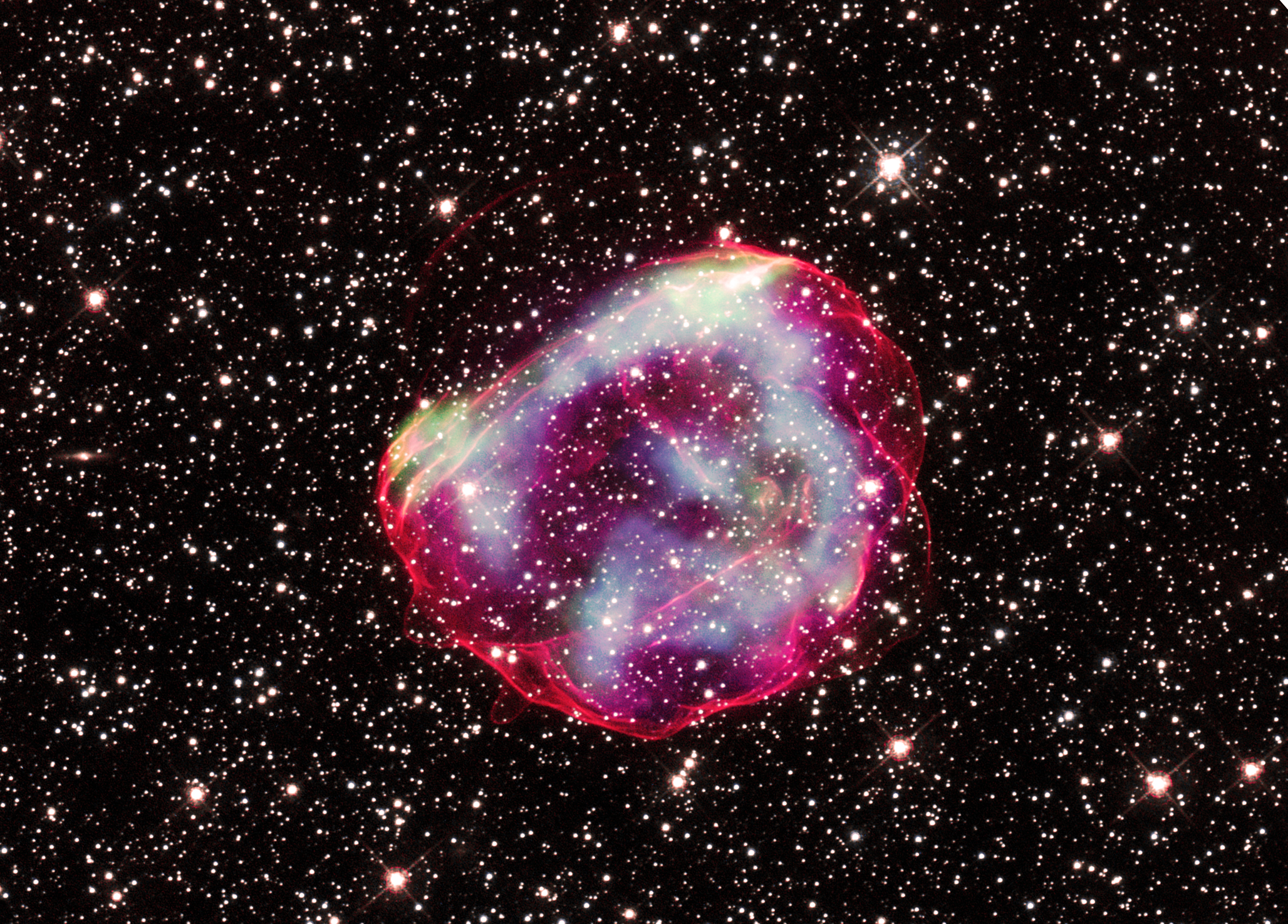
"There has been only one instance in which the cost has increased to help manage temperatures," he writes. "In our Senior Review ('NASA's highest form of peer review') in 2022, which resulted in a highly favorable appraisal of Chandra by an independent panel of prestigious scientists, we provided a request for two additional people on our flight team."
This request, he explains, had been approved and corresponds to about a one percent increase in cost. Yet, every other budget change, he adds, had been to either decrease staff — by more than 40% over the history of the mission — or to provide occasional modifications that covered things like cost-of-living increases.
Furthermore, to put it briefly, Slane also objects to a justification in the NASA budget request that says the 2022 Senior Review of Operating Missions had recommended continuing Chandra operations through FY 2025, but noted that "temperature issues" reduced the ability to "provide uninterrupted extended observing time and have greatly increased complexity of mission planning."
"For context, this text was provided by the Senior Review Committee in support of the request to provide the extra two members to the flight team," Slane writes. "This was in the section to address 'Technical Capability and Cost Reasonableness' for which their rating was 'Excellent/Very Good.'"
"We all understand that there is tremendous budget pressure at NASA, and reductions or project delays of some type were anticipated," he told Space.com. "The allocation of funding to specific projects is impacted by the total size of the budget, by Congressional earmarks that protect funding for some missions but not others, by high-level guidance from the community, and by specific preferences of those making decisions."
Surely, it seems we'll know in April what the ultimate fate of Chandra is — but, worst case scenario, if the observatory is decommissioned by the year 2029, it's indeed a little sad to think about what its final days would look like.
Right now, Chandra is in a high elliptical orbit above the Earth's atmosphere. If it gets turned off, it'll be forced to continue on its path while vanishing from astronomers' toolkits.
Meanwhile, the team won't be able to control the effects of external forces on the spacecraft, "ultimately leaving a marvel of science and engineering to tumble aimlessly as it silently orbits the planet," Slane said. "Studies looking 100 years into the future show no re-entry into the atmosphere.
"A massive gap in the availability of a high-quality, general-purpose, X-ray observing facility beyond Chandra is looming for the entire field of astrophysics.
Update 3/25: At the end of its lifetime, Chandra would not fall toward Earth but rather "tumble," or continue aimlessly, in its orbit.
Join our Space Forums to keep talking space on the latest missions, night sky and more! And if you have a news tip, correction or comment, let us know at: community@space.com.

Monisha Ravisetti is Space.com's Astronomy Editor. She covers black holes, star explosions, gravitational waves, exoplanet discoveries and other enigmas hidden across the fabric of space and time. Previously, she was a science writer at CNET, and before that, reported for The Academic Times. Prior to becoming a writer, she was an immunology researcher at Weill Cornell Medical Center in New York. She graduated from New York University in 2018 with a B.A. in philosophy, physics and chemistry. She spends too much time playing online chess. Her favorite planet is Earth.
